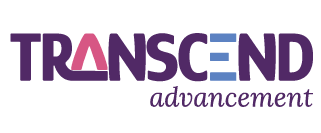Governance Best Practices
A GUIDE TO STRONG, EFFECTIVE BOARDS
A well-governed board is the backbone of a successful nonprofit. When board members understand their roles, follow best practices, and operate strategically, they provide the leadership necessary to drive an organization forward. However, without clear governance structures, even the most passionate boards can struggle with inefficiency and misalignment.
Whether you’re building a board from the ground up or refining an existing one, strong governance is essential. Here’s how to ensure your board is positioned for success.
Define Roles and Responsibilities Clearly
One of the most common challenges in nonprofit governance is role confusion. Board members should have a clear understanding of their duties to avoid micromanagement or disengagement.
A well-functioning board should:
Provide strategic oversight rather than managing day-to-day operations.
Offer financial stewardship, ensuring the nonprofit remains fiscally responsible.
Support fundraising efforts, from making personal contributions to engaging their networks.
Hire and evaluate the executive director, setting clear expectations for leadership.
Providing job descriptions for board positions and conducting periodic reviews of governance structures can help prevent misunderstandings.
Ensure an Effective Board Structure
A well-structured board isn’t just about having great people—it’s about having the right committees and leadership in place to maximize effectiveness.
Executive Committee: Oversees board operations and supports the organization’s leadership.
Finance Committee: Ensures sound financial management and budgeting.
Governance Committee: Manages board recruitment, training, and evaluation.
Development Committee: Leads fundraising efforts and donor engagement.
Having the appropriate committees in place ensures that responsibilities are distributed effectively, allowing the board to operate smoothly.
Recruit and Retain the Right Board Members
A high-performing board depends on engaged and knowledgeable members. Recruitment should focus on:
Diversity of skills and perspectives to bring fresh ideas and expertise.
Commitment to the mission, ensuring members are truly invested in the nonprofit’s success.
Fundraising capability, as board members should actively contribute to the financial health of the organization.
Regular board evaluations help ensure that all members remain active and accountable, and term limits allow for fresh energy while maintaining institutional knowledge.
Prioritize Board Engagement and Training
Even the best board members need ongoing education and engagement to stay effective. Consider implementing:
Board orientation programs to familiarize new members with their responsibilities.
Annual governance training to keep board members informed on best practices.
Regular check-ins to ensure board members feel valued and engaged in their roles.
Investing in board development strengthens leadership and ensures a more strategic approach to governance.
Foster a Strong Relationship with Leadership
The board-executive director relationship is one of the most critical dynamics in nonprofit governance. To ensure alignment:
Maintain open communication with regular check-ins and strategy discussions.
Define expectations clearly to prevent micromanagement or disengagement.
Support leadership decisions while providing constructive feedback.
A strong governance structure allows the executive director to lead effectively while benefiting from the board’s strategic guidance.
Strengthen Your Board’s Governance with Expert Support
At TRANSCEND Advancement, we provide board training, governance strategy consulting, and leadership alignment services to ensure your nonprofit’s board operates at its full potential. Whether you need to refine governance structures, recruit new members, or develop a stronger fundraising culture, we’re here to help. Let’s build a stronger, more effective board together.
